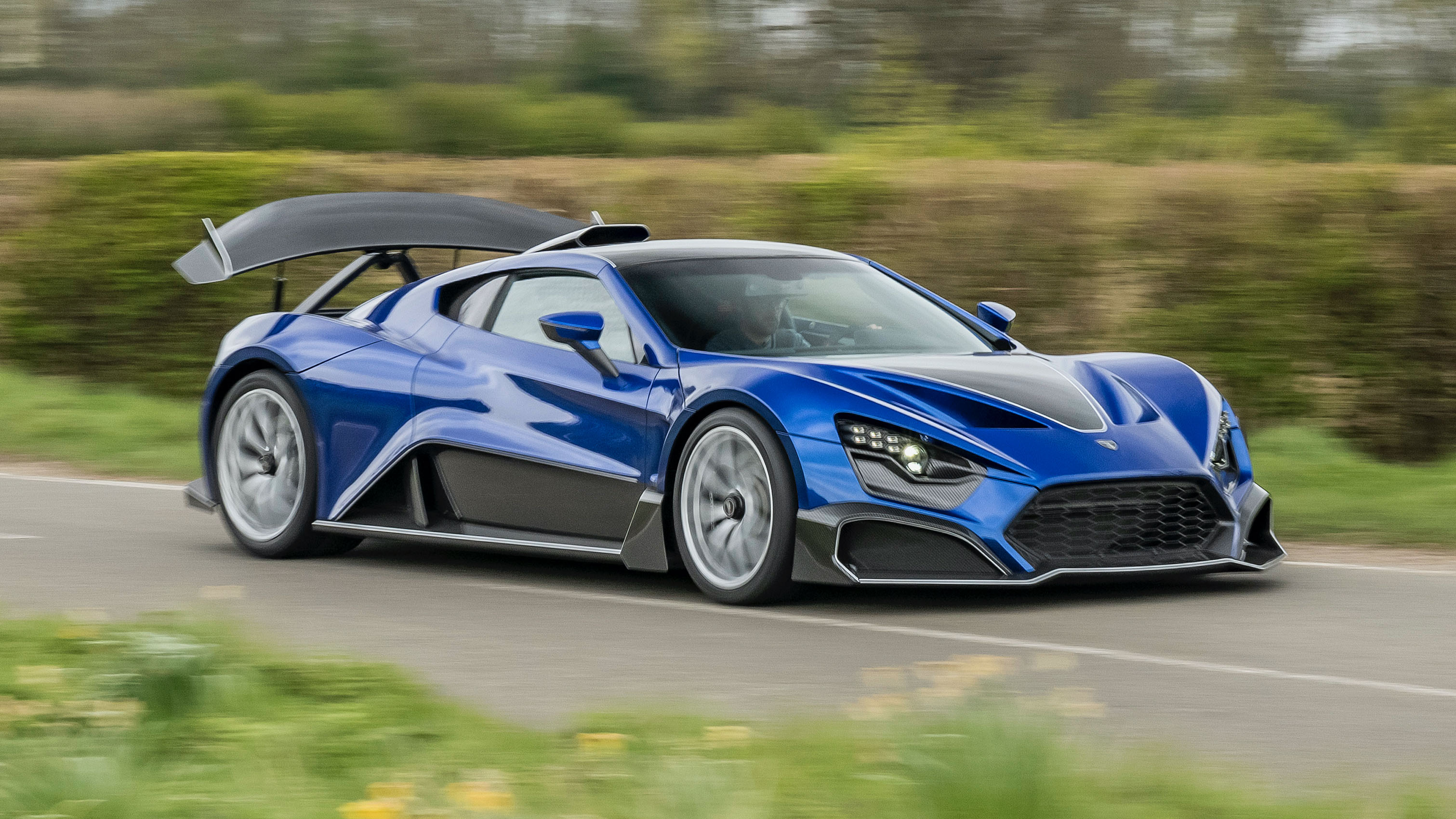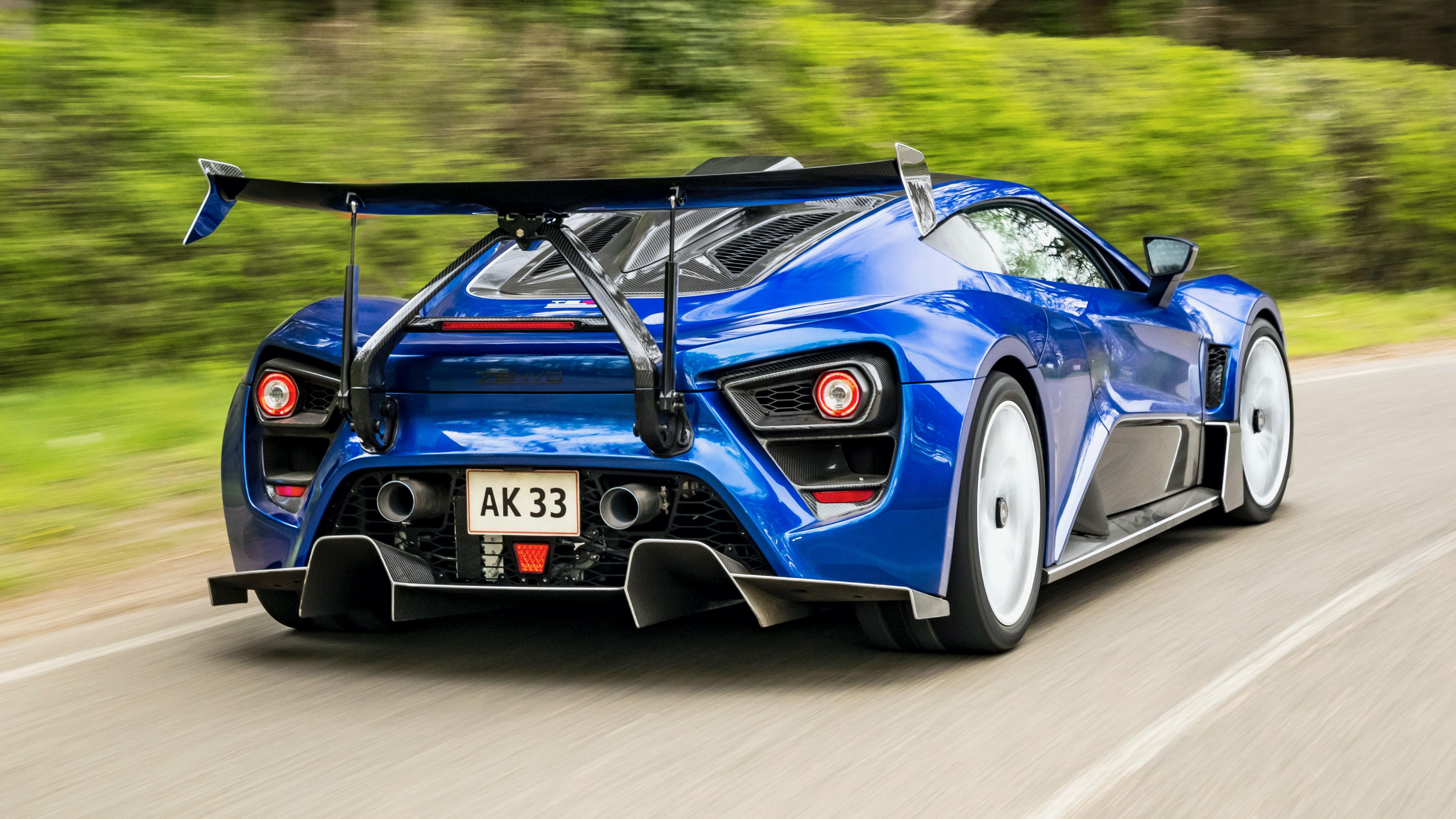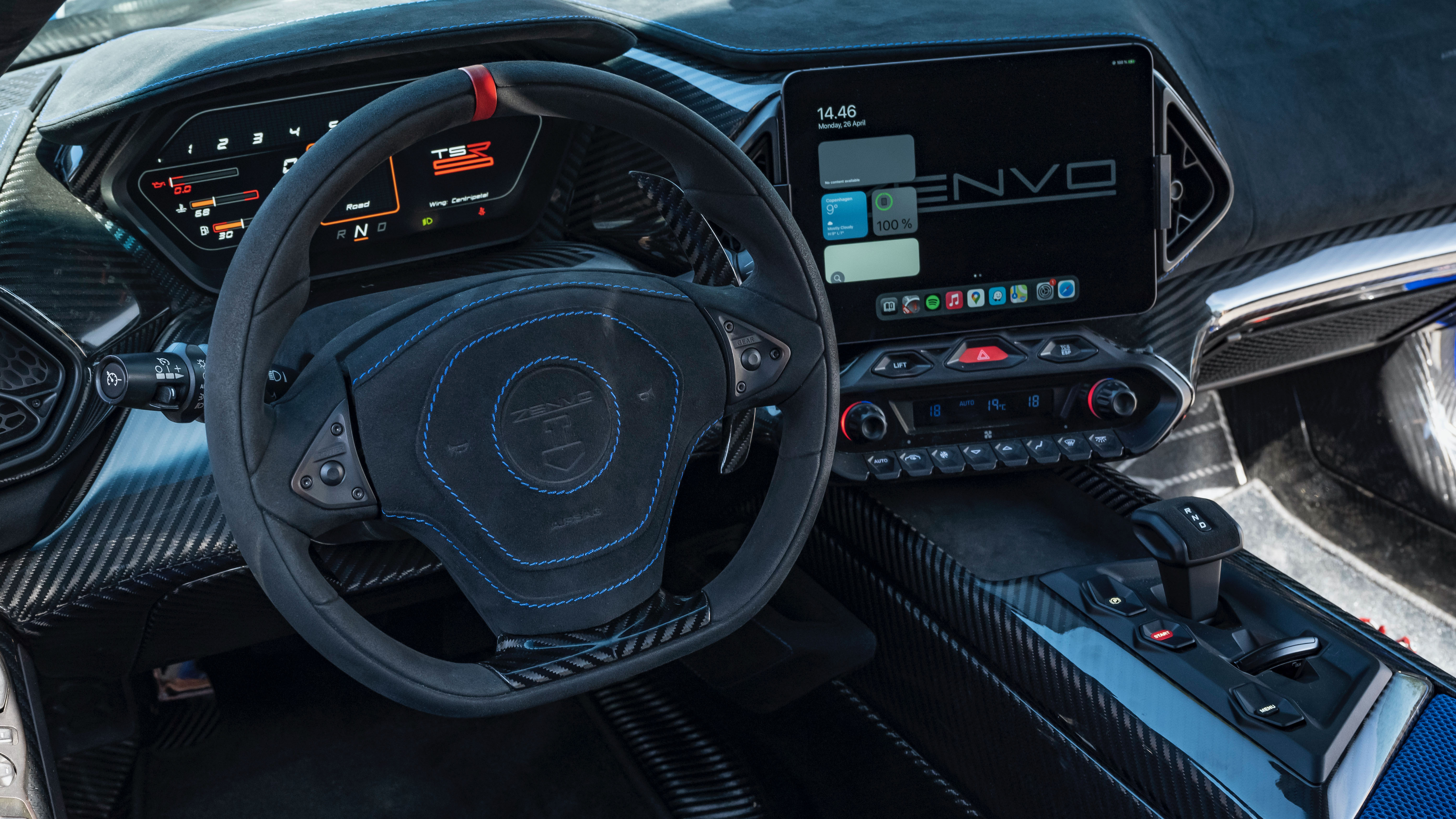
Zenvo TSR-S review
Driving
What is it like to drive?
We’ve driven two cars over the last three years. The red car you see in the pictures we drove on road and track, the blue car on road only.
Let’s deal with the red car first. It was in a more focused track spec with solid engine bushes which made it noisy and hectic with lots of vibration and a very direct mechanical connection. The steering is hydraulic, so there’s good feel from the surprisingly narrow 245-section front tyres, but on road it’s camber sensitive. Traction is very impressive through the 325-section Michelin Cup 2 rear tyres, the differential portioning out torque smoothly.
It asks a lot of you though. This is not a car to drive a long way, and although you know what the front end is up to, you need to think very carefully indeed about uncorking the twin superchargers. When fully engaged, the hit is astonishing, the acceleration furious, immersive and as uncomfortable as you’d expect from a car with near 1,200bhp on tap.
As a result the drivetrain takes more managing than the chassis. There’s some clever ideas in here. There are two power settings: one that gives you everything and another, iQ, that learns how much traction there is from stability control interventions and then limits torque accordingly. As the road dries out, so the system works out you can have more power. It’s basically traction control, with a twist.
Then there’s the unusual gearbox. At full chat it’s brilliant, this instant mechanical snap and mighty accompanying gunshot crack, way more purposeful than a twin-clutch and just as fast. At all other times it’s frustrating. Regular upshifts slur and kick clumsily, there’s clonks and delay, and shifting from Drive to Reverse can sometimes be a lottery. It was a four year project for Zenvo, but like the single-speed transmission in the Koenigsegg Regera, it’s fascinating but flawed.
The blue car is newer and has undergone more development. It’s a gentler experience. Mostly. Still pretty brutal as far as shove in the back and gearbox goes, but the rest of the car is more professional and up together. The extra bushing has calmed vibrations and reduced noise levels. It’s a quieter, less ferocious experience. You wouldn’t actively seek to do a long haul in here, but if you had to, you’d cope.
Push hard and the nose does feel slightly soft, just a hint inert when it first leans into a corner, but once the springs have got the measure of the weight and forces it carves a crisp line and is well balanced. You might think from the tyre width differential that you’ll be battling understeer, but the tyres are a corollary of the weight distribution, and the Zenvo has good grip and bite at the nose.
But this is not your usual supercar experience. Drive a Porsche, McLaren or Ferrari, even the very fastest ones, and their vast development budgets give them an air of effortless capability. The Zenvo is a wilder ride. The ride itself is very unyielding not just around town, but up to A-road speeds, only gaining some fluency when it’s got some load into it. Beyond that, what’s most shocking isn’t that it can’t cope with the power, but that it can. You expect the traction control to slap you back, but actually the TSR-S hooks up and just goes. Massive response, thunderous power and, beyond 4,000rpm, a sense that the acceleration has moved beyond the realms of the physically possible into a virtual world. Which is concerning. It leaves you, the driver, clinging on and desperately wanting to feel like you’re in charge. This is a car that can get away from you without ever losing traction. It takes a lot of keeping up with, not merely due to the speed, but the mental bombardment.
The wing. We need to mention the wing. You can watch it strutting its stuff in the door mirrors, but apart from that you’re not really aware of it. It is worth trying to watch the reactions of other drivers when you tackle a roundabout though. On track we haven’t had enough full-blooded laps to be able to tell if it actually makes a difference to cornering. If it does my guess will be that, as Vollertsen suggests, it just helps keep the rear axle more level.
Featured

Trending this week
- Car Review
BMW 1 Series
- Top Gear's Top 9
Nine dreadful bits of 'homeware' made by carmakers






